These chewy salted caramel macarons are golden brown in color with subtle caramel notes from brown sugar in the macaron shells. The interiors are filled with a creamy swirl of salted caramel buttercream and a pocket of homemade salted caramel sauce.
Using a Swiss meringue buttercream keeps the frosting from being cloying, and the dark amber notes in the caramel sauce help balance the overall sweetness. If you're a fan of salted caramel, these are definitely for you!
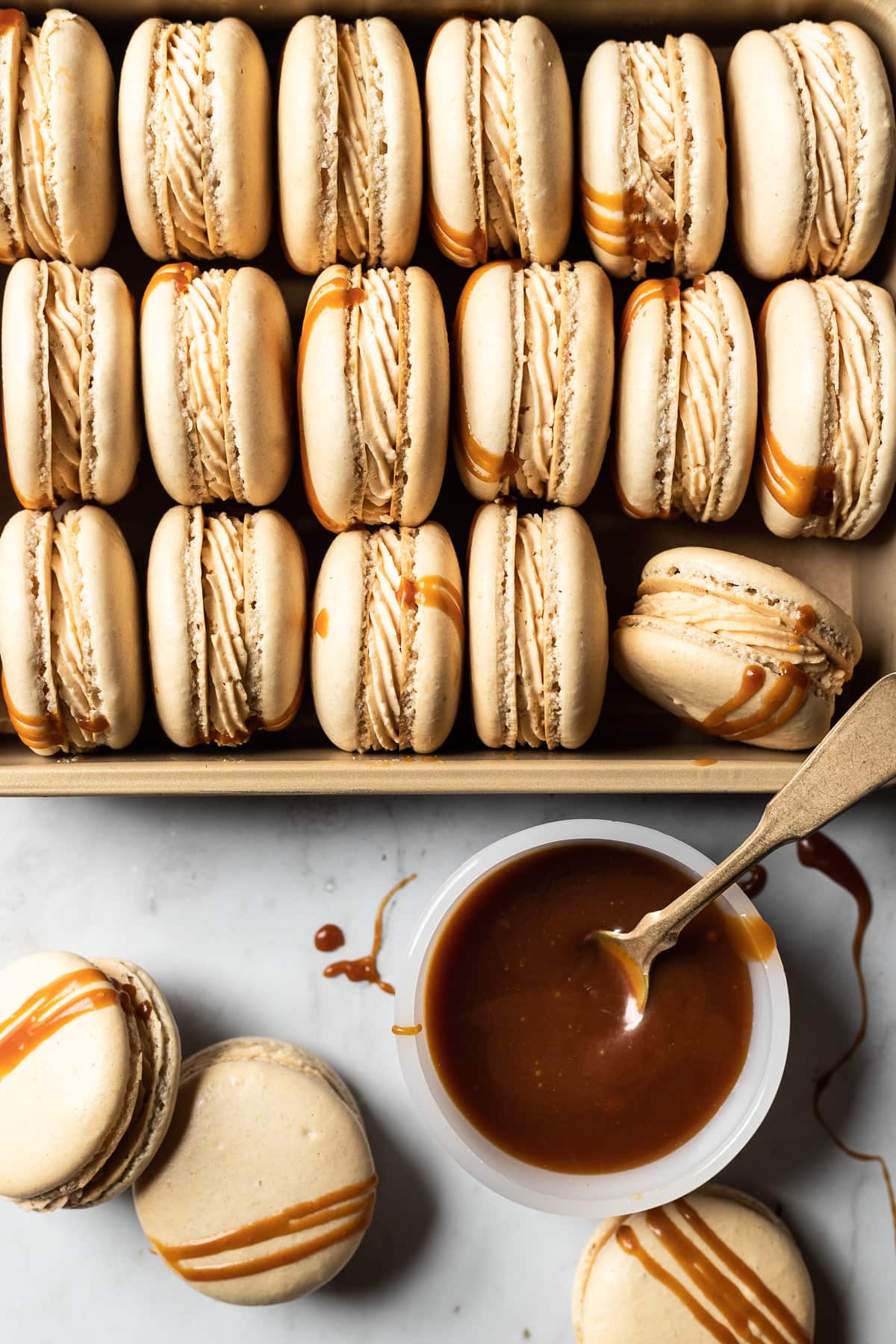
I really love salted caramel — I’ve drizzled it on mascarpone-frosted blackberry poppy seed cake, tucked it into a salted caramel chocolate tart, and poured it over mini apple ginger cakes. There’s almost always a partial jar on the top shelf of my fridge. It’s easy to make and pairs perfectly with lots of treats (apple slices dipped in caramel sauce are a delightfully simple indulgence).
This macaron recipe is a not-so-subtle love letter to caramel. The shells use brown sugar instead of white for a natural golden color and extra flavor. The caramel buttercream gets its rich taste from a generous portion of homemade salted caramel sauce, which is also piped into the center and drizzled on top — a triple caramel treat that’s well worth the effort.
If you haven’t tried macarons before, I encourage you to give these a shot. They do have a learning curve, but the results are truly rewarding.
And if you like the sandwich cookie format, check out these light dulce de leche alfajores, copycat homemade Oreo cookies, and rich chocolate coffee mascarpone cookies.
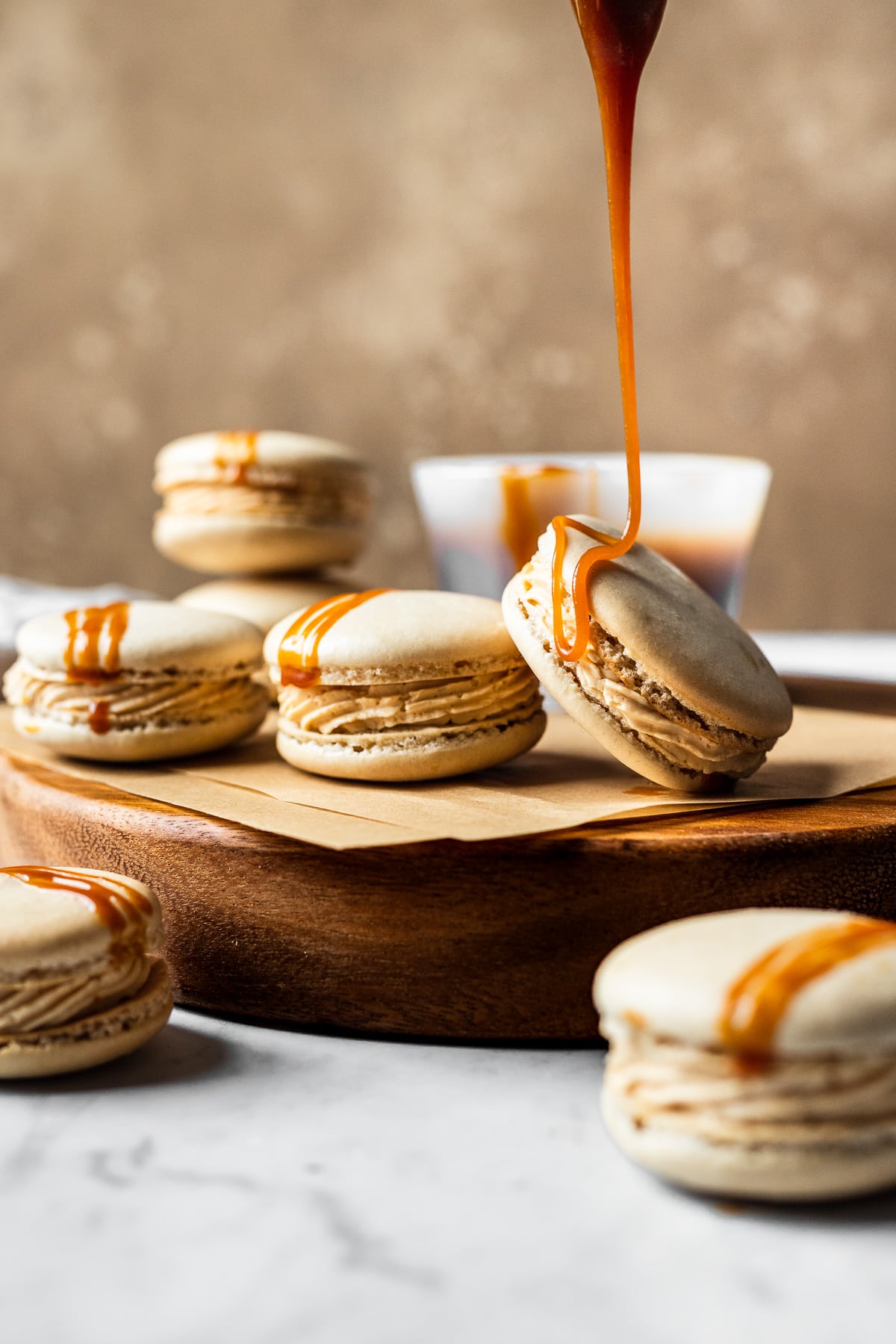
Ingredients
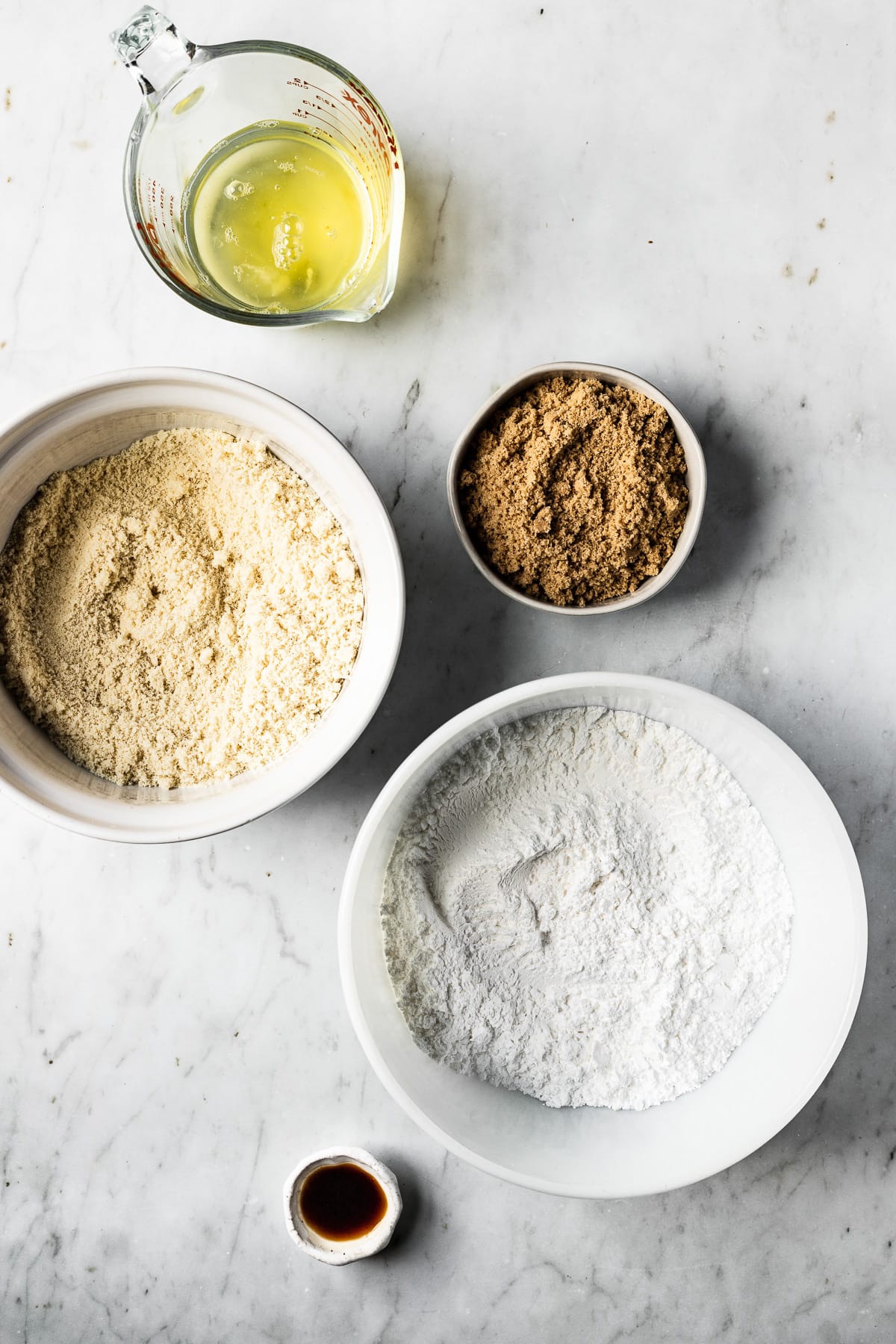
MACARONS
Almond flour and powdered sugar
Choose finely ground almond flour—not almond meal or roughly ground nuts—to keep your shells smooth and lump-free. If you have a food processor, pulse the almond flour and powdered sugar together, then sift to catch any bigger pieces. This creates a silky texture in your macarons.
Egg whites
Use room temperature egg whites to get the best volume. Forgot to set them out? No problem—place whole eggs in warm water for 5 minutes before separating. If you’ve already separated the whites, set the container’s base in warm water for 5 minutes—just be careful not to let water seep in.
Brown sugar
Add brown sugar for sweetness, a subtle caramel flavor, and a natural golden color in your shells.
SALTED CARAMEL SAUCE
Granulated sugar and water
This recipe uses the wet caramel method. You melt sugar with water and then boil it until it turns a rich golden brown. The water lets the caramel cook longer, deepening the flavor.
Heavy whipping cream
Warm the cream before you add it to the hot caramel. This keeps the sauce silky smooth and prevents the sugar from seizing.
SALTED CARAMEL SWISS BUTTERCREAM
Egg whites and sugar
Warm the egg whites and sugar gently, then whip them into a silky Swiss meringue—the base for a smooth, balanced buttercream.
Unsalted butter
Use room temperature butter, about 65–70°F. It should feel soft enough to press your finger in with some resistance. I cut my butter into tablespoon-sized cubes so it warms evenly.
Salted caramel sauce
Make sure the caramel sauce is at room temperature before mixing it into your buttercream for the best texture.
Instructions
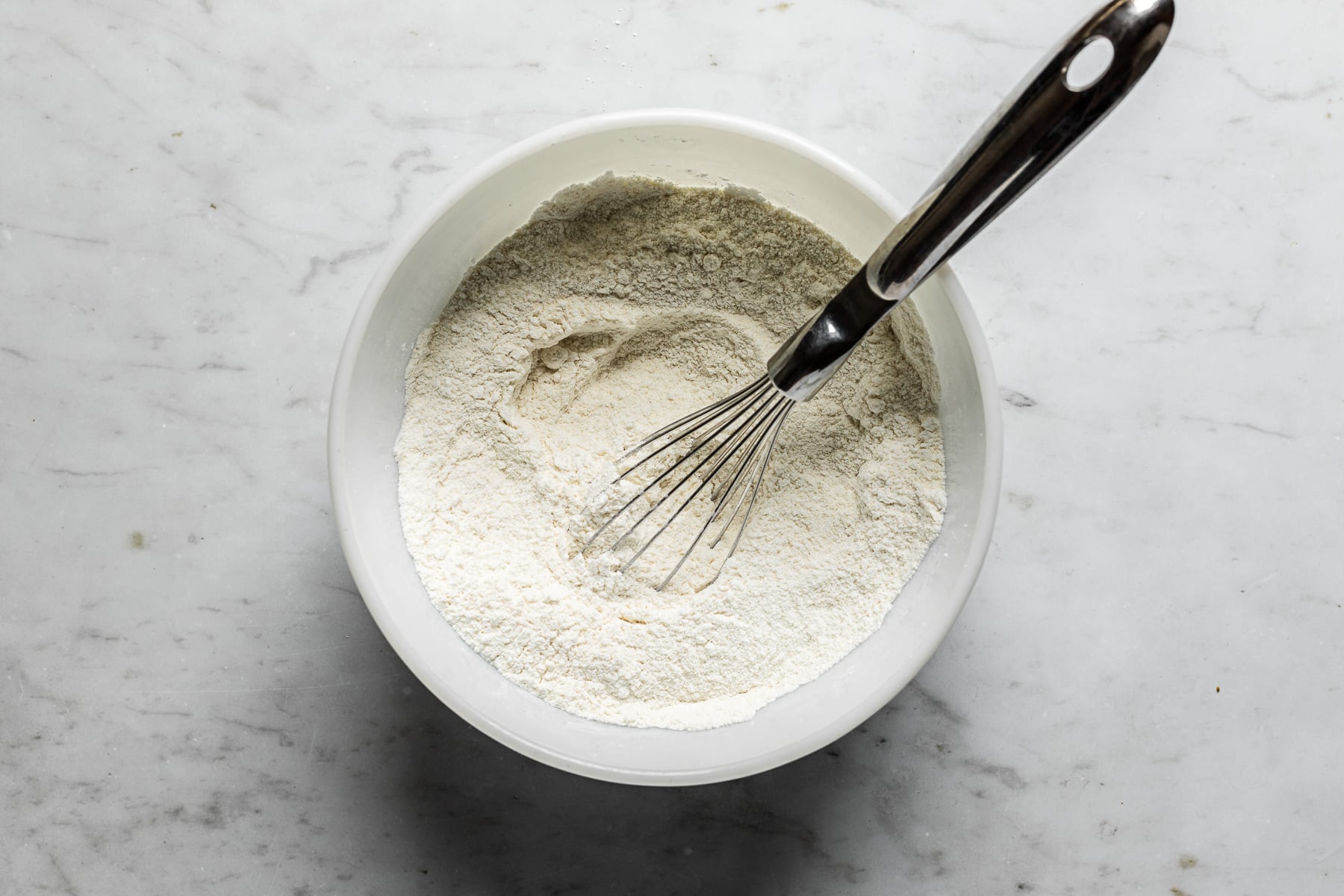
Step 1: In a medium bowl, whisk together the almond flour and powdered sugar. Set aside.
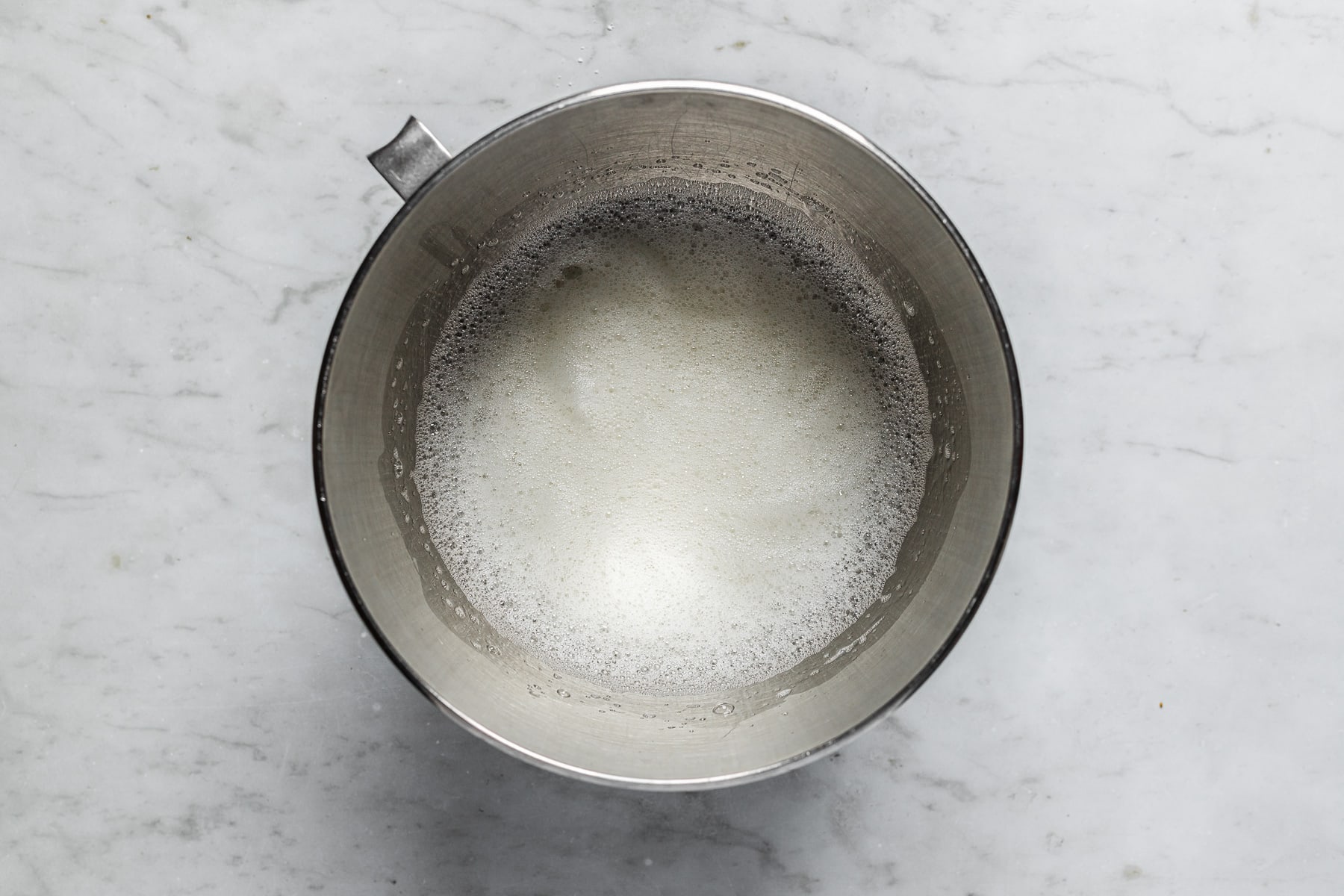
Step 2: Into the bowl of a stand mixer fitted with the whisk attachment, add the egg whites. Beat on medium speed until foamy.

Step 3: Gradually beat in the brown sugar. Scrape down the side of the bowl.

Step 4: Increase speed to high and beat egg white mixture until stiff peaks form.
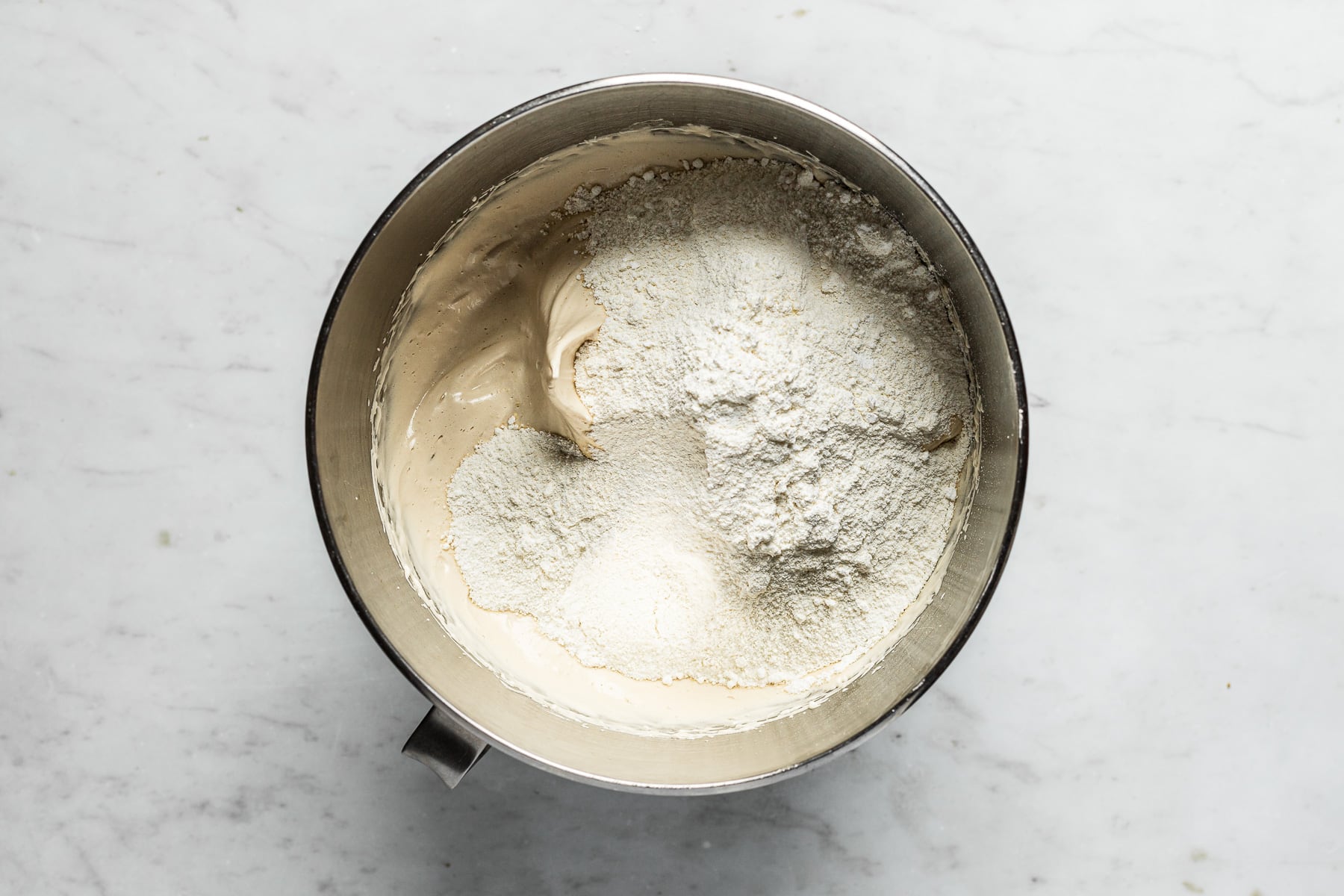
Step 5: To the stiff egg white mixture, add half of the almond flour mixture.
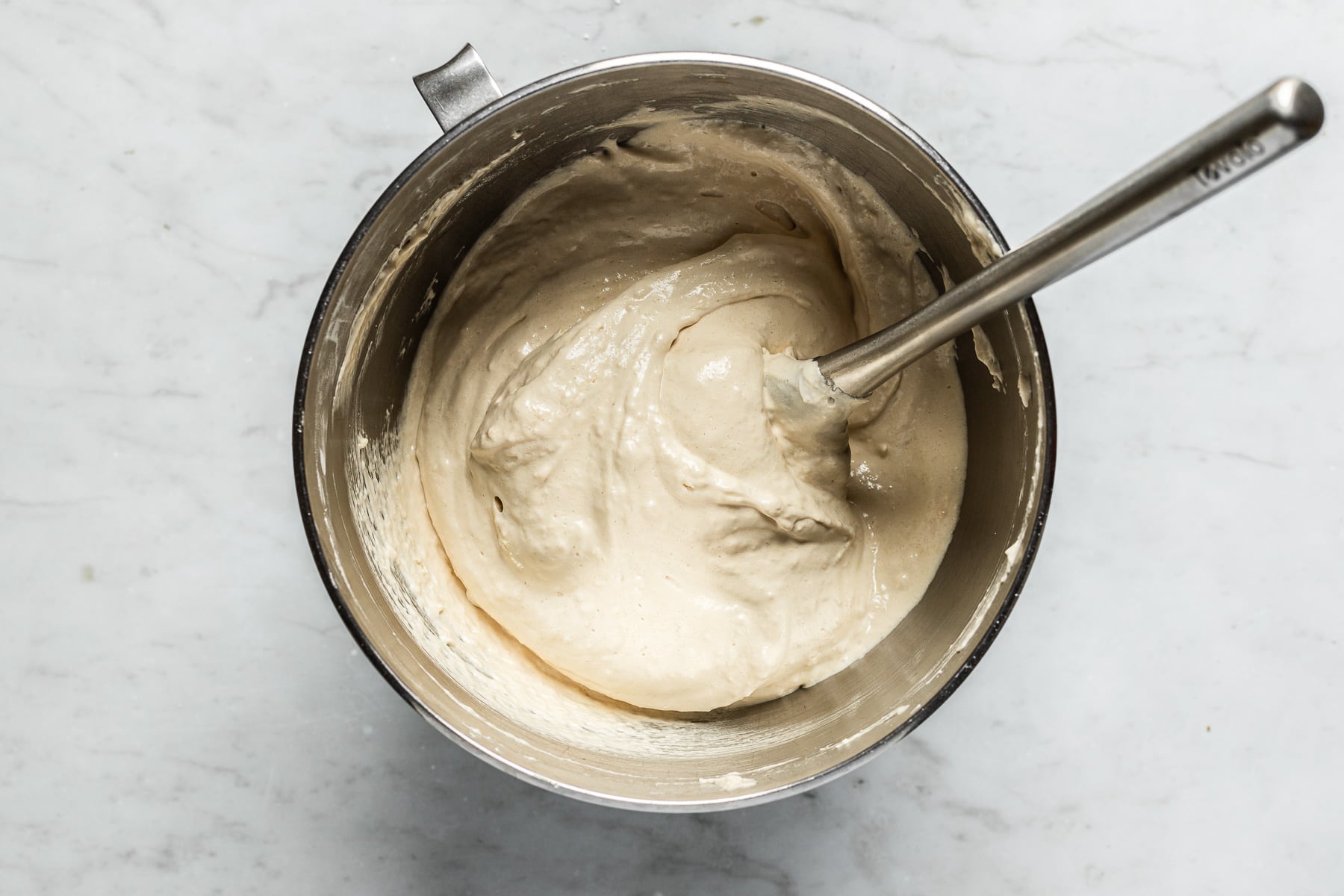
Step 6: With a spatula, fold it in until well mixed together. Add the second half of the almond flour mixture. This is the stage called macaronage. You want to fold in the remaining almond flour while removing some of the additional volume/air from the macaron batter. As you fold in the almond flour, use the spatula to press the batter up and against the side of the bowl.
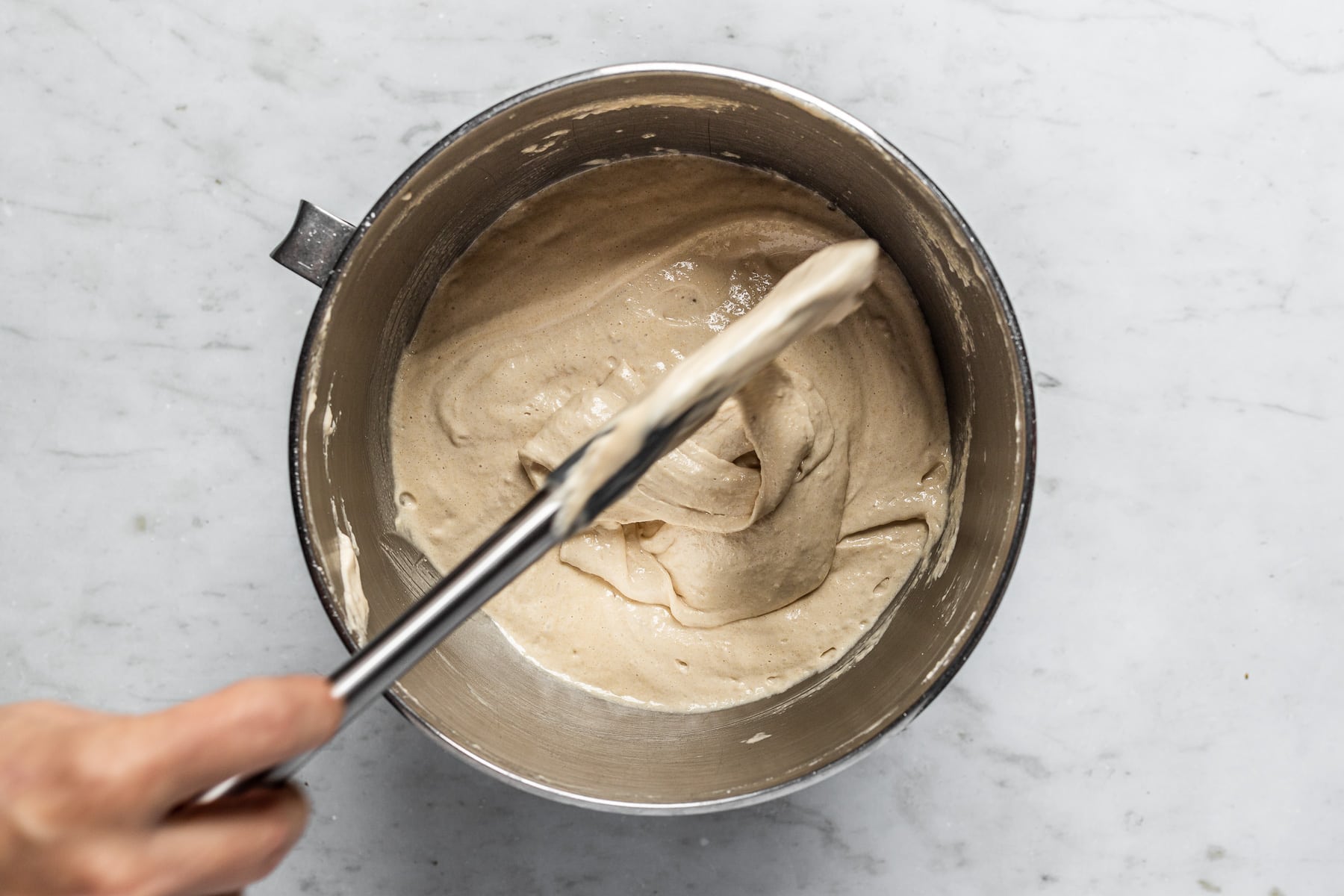
Step 7: Every few strokes, scoop the batter onto your spatula and let it drip off. It should flow in a constant, slow stream (like lava or honey) without breaking. If you can hold the spatula and drizzle a figure 8 with the batter without it breaking, your batter is ready.

Step 8: Using a piping bag fit with a round open tip, pipe circles of macaron batter onto each circle marked on the parchment paper. Stop squeezing and give a quick flick of the piping bag tip up and to the side to finish each macaron. Pipe all the circles onto the parchment and continue with other pans. Lift each pan and bang it down onto the counter (as level as possible).
Give it a quarter turn and repeat banging three more times, turning each time. Turning the pans helps ensure the batter does not spread too much in any direction. Repeat with all baking pans. This step helps remove air bubbles. Pop any visible air bubbles with a toothpick. Set the pans on a draft free surface to dry the macarons for a minimum of 30 minutes.
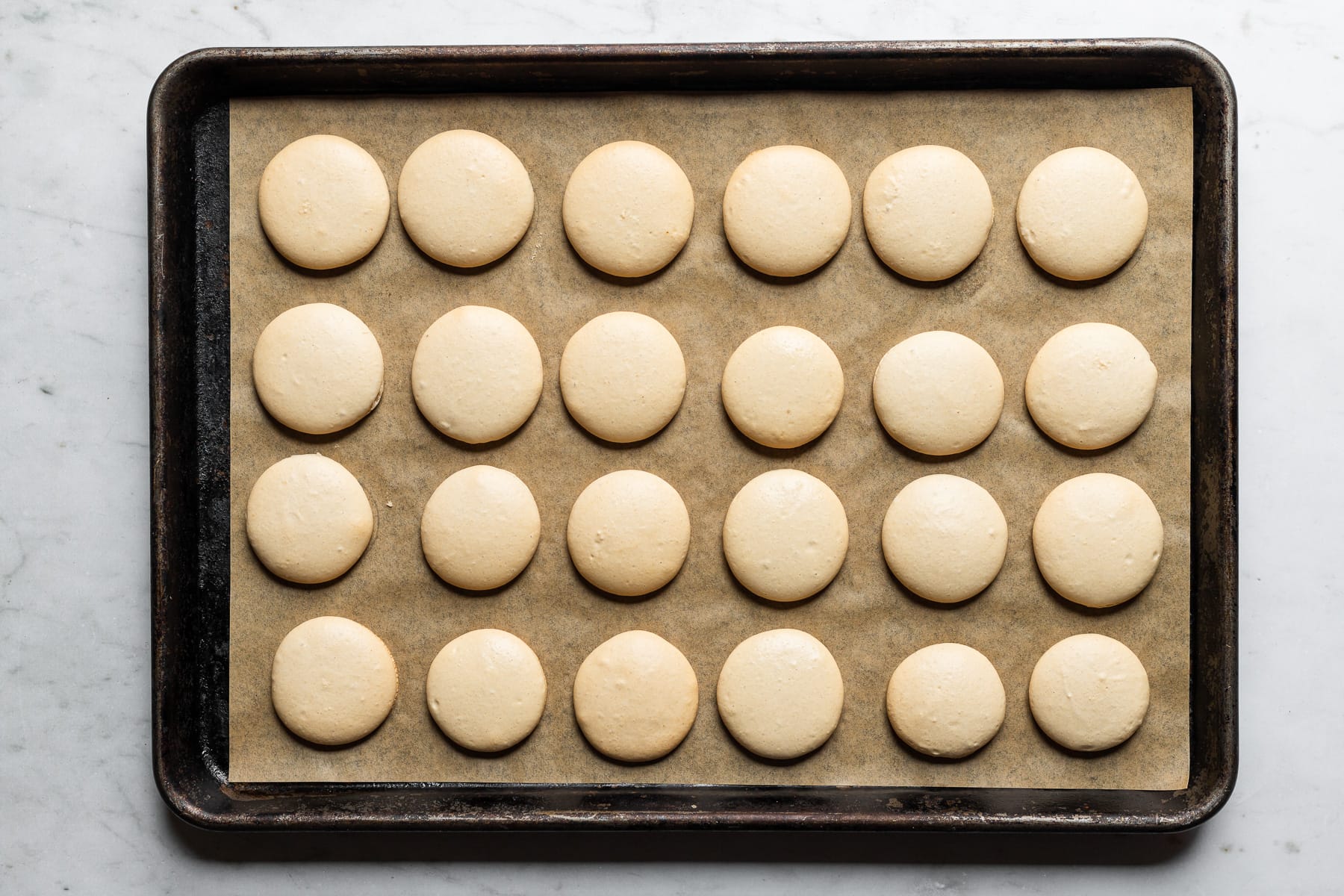
Step 9: Bake at 300 degrees Fahrenheit for 17 minutes.
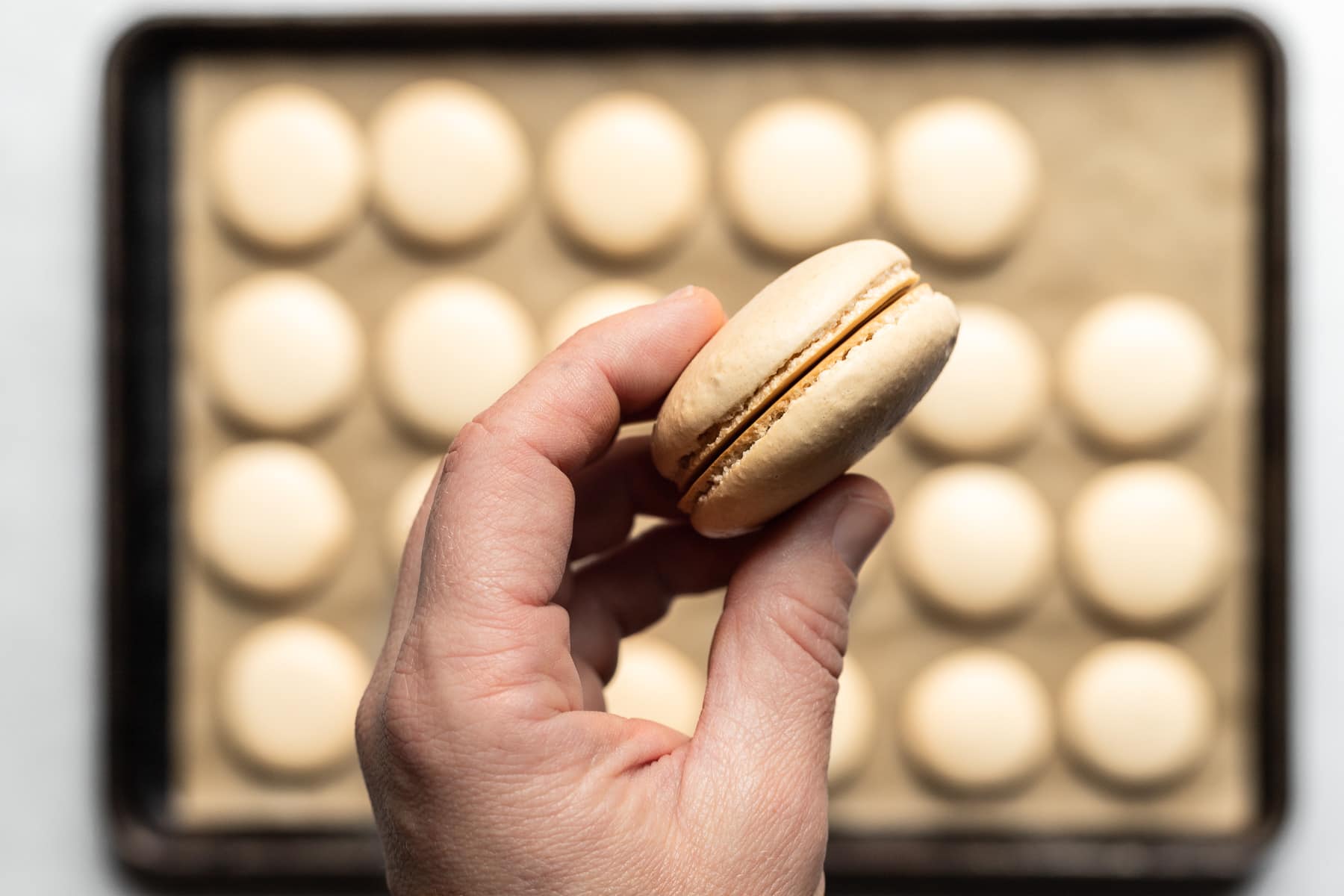
Step 10: Pair up similar sized shells for filling and decorating the macarons.
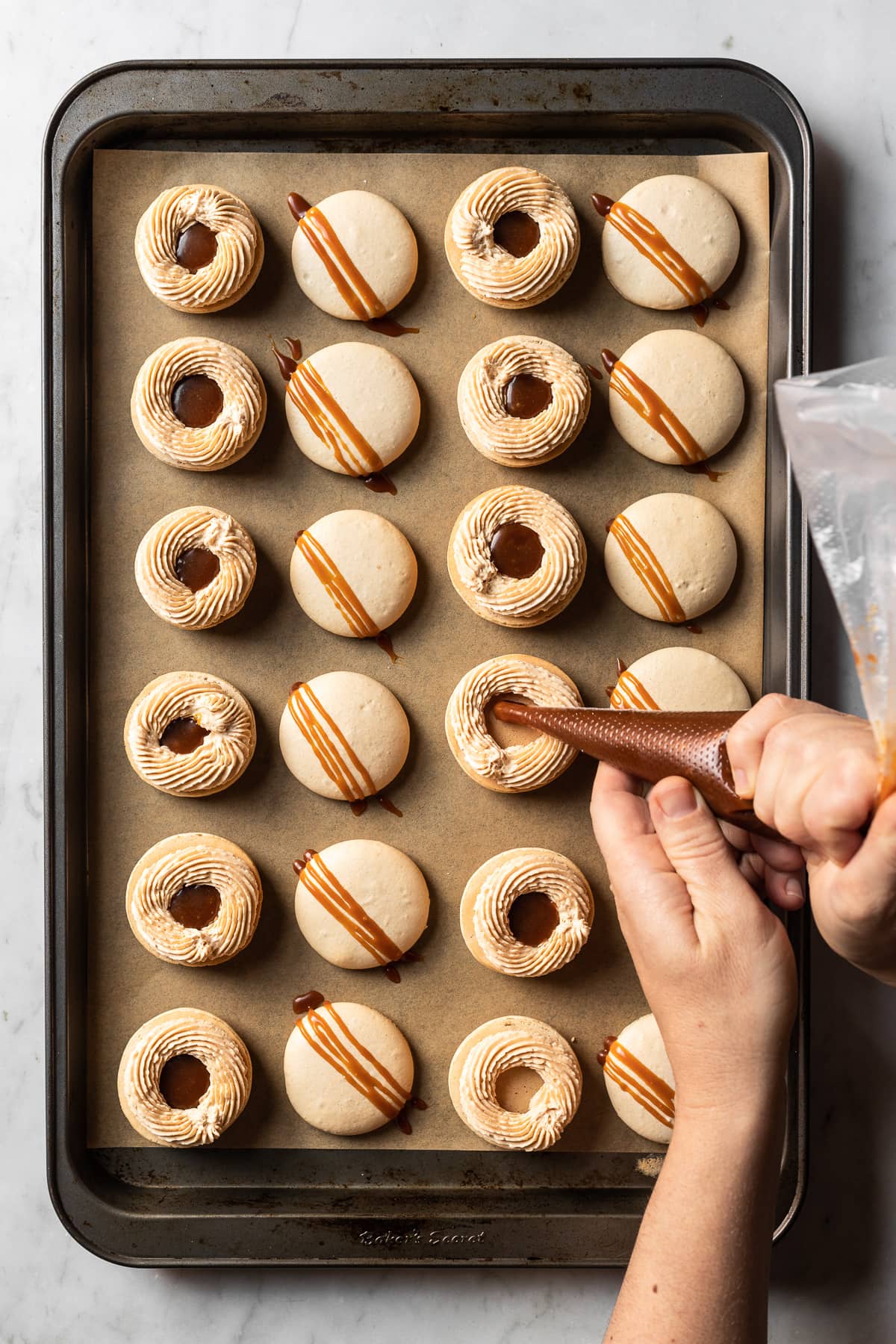
Step 11: On a parchment lined baking sheet, add caramel drizzle to the tops of half of the macaron shells. To the bottom halves, add a piped circle of caramel buttercream and fill with salted caramel sauce.
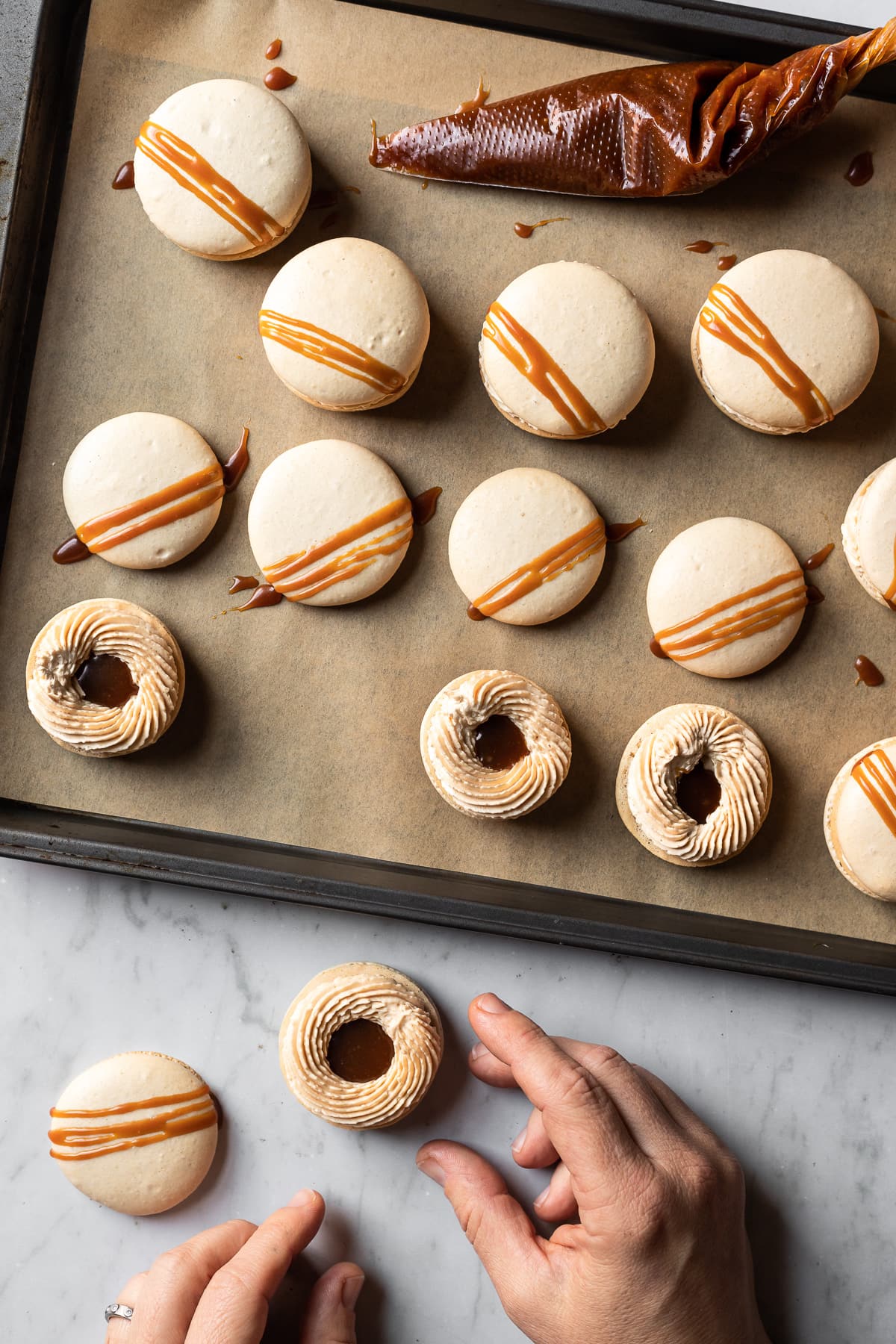
Step 12: Assemble similar sized macaron shell bases and tops by pressing the tops gently into the base. Place on a parchment lined baking sheet in the refrigerator for 12-24 hours to mature.

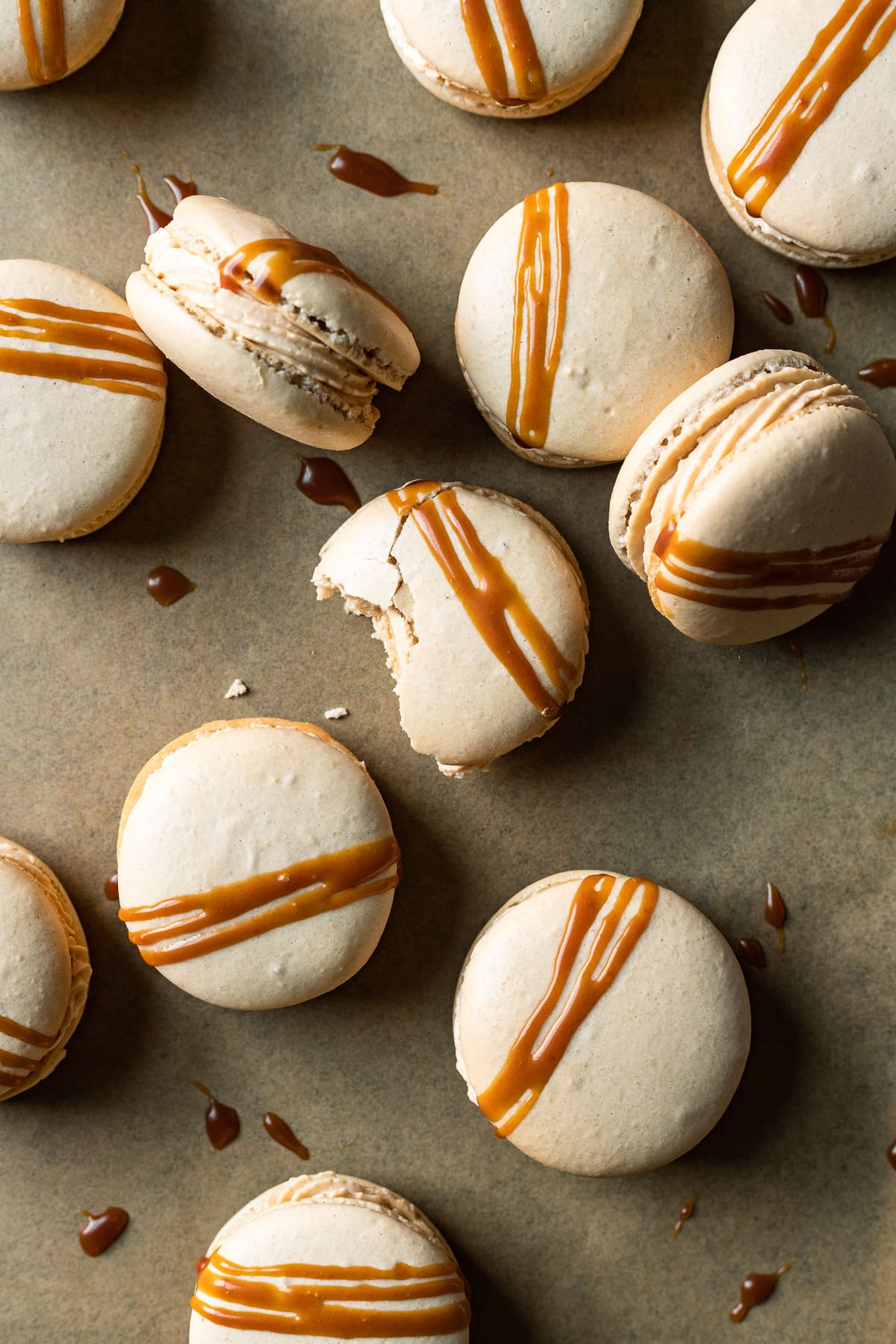
Variations
Part of the fun of macarons are the nearly infinite variations that you can create with different fillings. While it's possible to modify the macaron shell flavors as well, it's an advanced technique as it alters the ingredient ratios. If you'd like to try different flavors, start easily by swapping out fillings:
- Swap the salted caramel sauce for a chocolate ganache filling to make chocolate caramel macarons. Try the chocolate ganache from these Italian chocolate hazelnut sandwich cookies.
- Instead of a salted caramel buttercream, substitute a dark chocolate Swiss meringue buttercream. A half recipe should be enough. Fill with salted caramel.
- Add 1-2 teaspoons of instant espresso powder to the caramel buttercream for a punch of coffee flavor! I like to dissolve the espresso powder into the vanilla extract and then add that to the buttercream per the instructions.
- Add 2 Tablespoons of bourbon to the salted caramel sauce (when you add the vanilla extract) for a bourbon salted caramel filling!
Storage
These macarons store well, but the caramel drizzle on top never fully sets, so they’re a bit more delicate than most.
Refrigerate:
If serving within 24 hours, store in a single layer on a parchment-lined baking sheet in the fridge. For longer storage (up to 5 days), hold off on the caramel drizzle so you can stack them between parchment paper layers in an airtight container. Decorate just before serving
Freeze:
Freeze macarons in a single layer on a parchment-lined tray until firm (1–2 hours), then transfer to an airtight container with parchment between layers. Defrost in the fridge.

Troubleshooting
Macaron troubleshooting
Macarons are a technical bake—small changes in technique can have a big impact. Be patient with yourself and enjoy the process. Each batch will teach you something new!
For the most consistent results, use a digital kitchen scale, sift all dry ingredients, and take your time during the macaronage (folding) stage. For a deeper dive, I recommend this macaron troubleshooting guide.
Macarons don’t develop feet
Be sure to beat the meringue to stiff peaks—under- or over-mixed meringue can prevent feet from forming. Also, let piped macarons rest until a skin forms on top. When lightly touched, the surface should feel dry, not tacky. This skin helps direct steam out the sides as they bake, creating those signature frilly feet.
Macarons have hollow shells
Hollow centers can result from over-whipped meringue or underbaked shells. Keep your meringue stiff but not dry, and make sure your shells are fully baked before removing them from the oven.
Macarons are wrinkly
Wrinkled shells may be caused by over-mixed batter, over-beaten meringue, or an oven that runs too cool. Use an oven thermometer to ensure your oven is properly preheated—mine typically takes 5–10 minutes longer than the beep indicates.
Caramel sauce troubleshooting
Caramel seizes when adding cream
This usually happens if your cream is too cold or added too quickly. Warm the cream slightly before adding it gradually. If lumps form, keep stirring over medium-low heat—they’ll usually dissolve with time (5–10 minutes).
Caramel sauce doesn’t thicken
Hot caramel sauce will still be thin; it thickens as it cools and firms up more in the fridge. If it still won’t set after cooling completely, return it to a saucepan and simmer for 5–10 minutes more to reduce it.
Swiss meringue buttercream troubleshooting
Buttercream is runny or soupy
If your buttercream looks loose or won’t hold its shape, the mixture is likely too warm—either the meringue wasn’t cooled enough, or the butter was too soft.
Chill the bowl in the fridge for 10–15 minutes, then return it to the mixer and beat on medium-low speed with the paddle attachment until it thickens. Repeat the chilling process if needed.
Buttercream is broken or curdled
This typically means your mixture is too cold—perhaps the meringue cooled too much, the butter was too cold, or the buttercream was refrigerated and remixed.
To fix it, place the bowl over a warm water bath for a few minutes until the edges soften, then beat again with the paddle attachment until smooth.
Alternatively, remove about ½ cup of buttercream, microwave it for 10 seconds until just melted, and beat it back into the main bowl. Repeat if necessary until smooth.
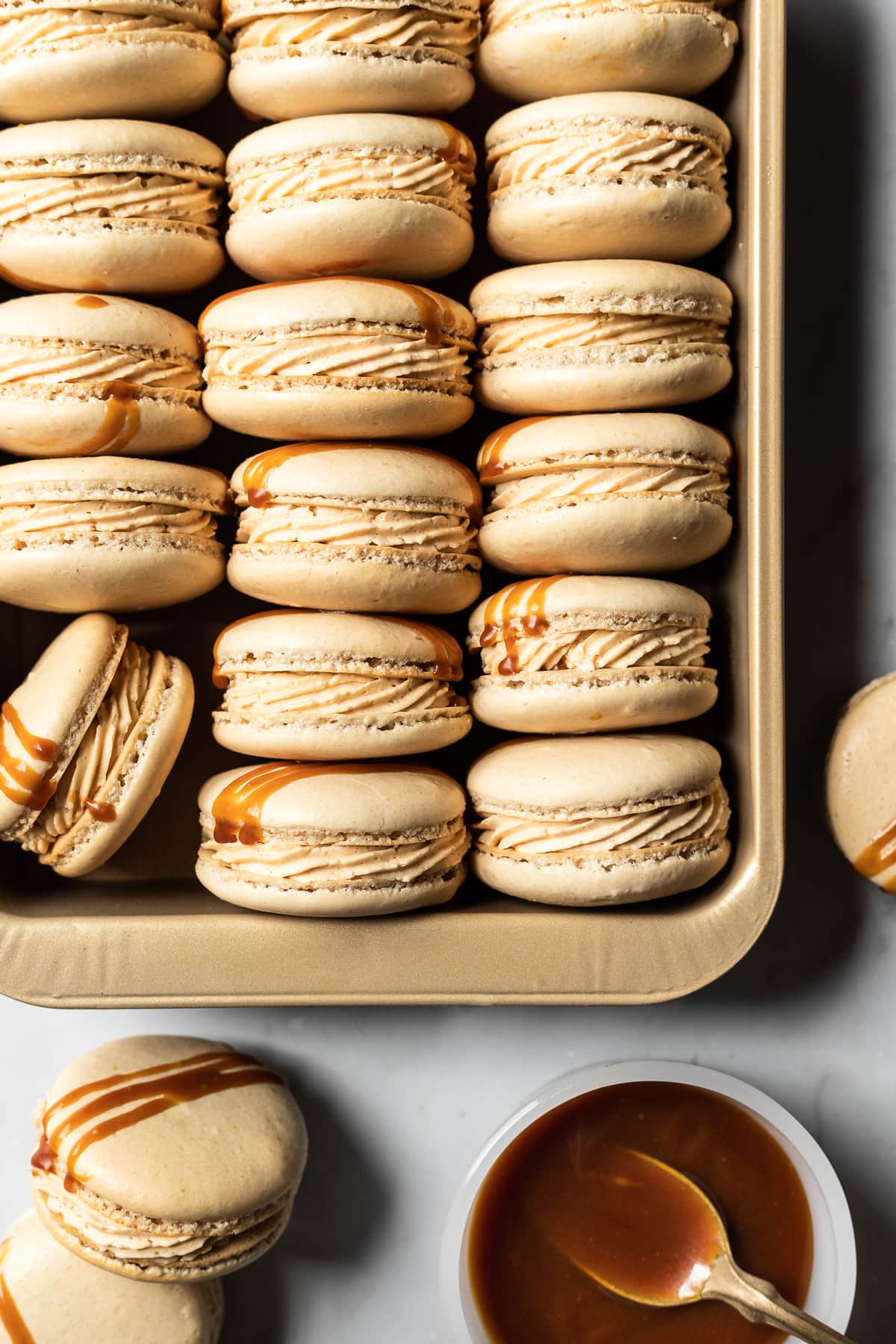
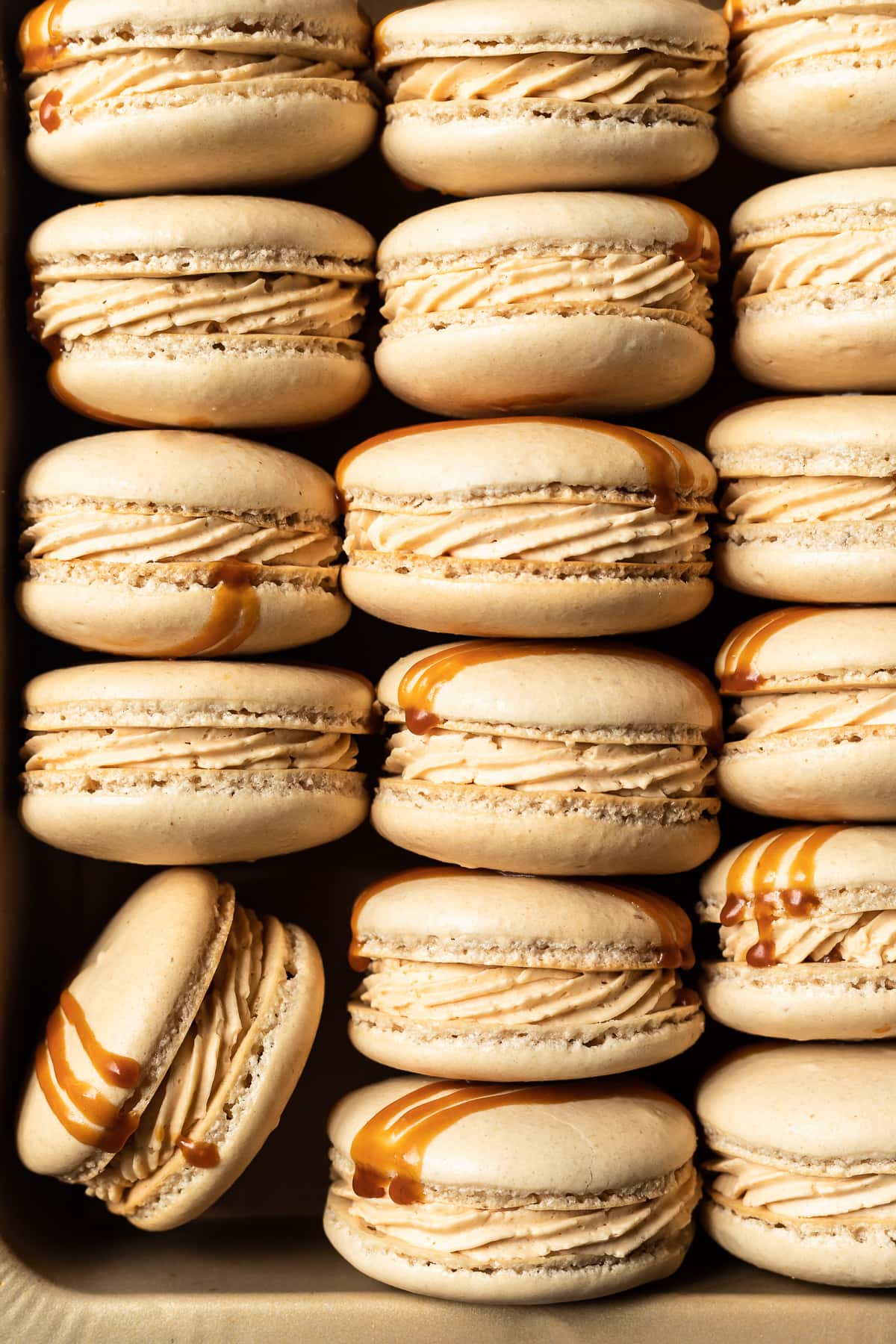
Frequently asked questions
Swiss meringue buttercream has a smooth, silky consistency and is more stable than American buttercream. It also contains less sugar, which is helpful here since the caramel sauce adds sweetness on its own.
American buttercream is made primarily from butter and powdered sugar, so it’s already quite sweet. Adding caramel would increase the liquid content, requiring even more sugar to balance it—resulting in a frosting that’s overly sweet and grainy.
Swiss meringue buttercream is also more forgiving when it comes to adding small amounts of liquid flavorings like sauces or jams. You can often incorporate them (like this salted caramel sauce) without affecting the texture or needing major ingredient adjustments.
Yes! Here’s how to prep each component ahead of time:
Macaron shells
You can bake the shells in advance and store them in an airtight container in the fridge, layered between parchment. They’ll keep for 5 days. For longer storage, freeze them in an airtight container. Defrost in the fridge before filling.
Salted caramel sauce
This keeps in the fridge for 2–3 weeks, or in the freezer (with room for expansion) for up to 3 months. Bring it to room temperature before using.
Salted caramel Swiss meringue buttercream
You can make the buttercream ahead and store it:
At room temperature (up to 2 days)
In the fridge (up to 2 weeks)
In the freezer (up to 3 months)
Before using, bring the buttercream to room temperature and re-whip it until smooth and fluffy. If it looks curdled or broken, see the troubleshooting section.
Love this recipe? Please leave a comment and star rating. ★★★★★ Your feedback, suggestions, and adaptations are very helpful to other bakers!
📖 Recipe
Salted Caramel Macarons
INGREDIENTS
French Macarons
- 170 grams almond flour, sifted
- 300 grams powdered sugar, sifted
- 180 grams egg whites, room temperature (about 6 large eggs worth)
- 160 grams brown sugar, light/golden
- 1 teaspoon vanilla extract
Salted Caramel Sauce
- 200 grams (1 cup) granulated sugar
- 60 mL (¼ cup) water
- 125 mL (½ cup) heavy whipping cream, warmed
- 28 grams (2 Tablespoons) unsalted butter
- 1 teaspoon vanilla extract
- ½ teaspoon kosher salt, or to taste
Salted Caramel Swiss Meringue Buttercream Frosting
- 90 grams egg whites , (about 3 large eggs worth)
- 150 grams (¾ cup) granulated sugar
- 170 grams (6 ounces, 1½ sticks) unsalted butter, room temperature, cubed
- ½ teaspoon vanilla extract
- 75 grams (60 mL, ¼ cup) salted caramel sauce , room temperature (recipe above)
- ¼ teaspoon kosher salt, or to taste
INSTRUCTIONS
French Macarons
- Prepare your half sheet baking pans by lining them with parchment paper. Slip a printed template underneath as a guide, or trace 1½ to 1¾ inch circles about ¾ inch apart on the paper, and then flip it over so the marks are underneath.
- In a medium bowl, whisk together the almond flour and powdered sugar. Set aside.170 grams almond flour, 300 grams powdered sugar
- Into the bowl of a stand mixer fitted with the whisk attachment, add the egg whites. Beat on medium speed until foamy. Gradually beat in the brown sugar and vanilla extract. Scrape down the side of the bowl. Increase speed to high and beat egg white mixture until stiff peaks form.180 grams egg whites, 160 grams brown sugar
- To the stiff egg white mixture, add half of the almond flour mixture. With a spatula, fold it in until well mixed together. Add the second half of the almond flour mixture. This is the stage called macaronage. You want to fold in the remaining almond flour while removing some of the additional volume/air from the macaron batter.
- As you fold in the almond flour, use the spatula to press the batter up and against the side of the bowl. Every few strokes, scoop the batter onto your spatula and let it drip off. It should flow in a constant, slow stream (like lava or honey) without breaking. If you can hold the spatula and drizzle a figure 8 with the batter without it breaking, your batter is ready.
- Place a large round open tip (I use a Wilton 1A tip) into a 16 inch piping bag. Push a bit of the bag down into the tip from the exterior, blocking the flow of the tip. This will allow you to fill the bag without the batter dripping out. Fill your piping bag ½ to ¾ full.
- Holding your piping bag perfectly upright, at a 90 degree angle from the baking sheet, pipe circles of macaron batter onto each circle marked on the parchment paper. Stop squeezing and give a quick flick of the piping bag tip up and to the side to finish each macaron. Pipe all the circles onto the parchment and continue with other pans.
- Lift each pan and bang it down onto the counter (as level as possible). Give it a quarter turn and repeat banging three more times, turning each time. Turning the pans helps ensure the batter does not spread too much in any direction. Repeat with all baking pans. This step helps remove air bubbles.
- Preheat oven to 300 degrees Fahrenheit (150 Celsius, Gas Mark 2). Place a rack in the center of the oven.
- Poke any remaining visible air bubbles with a toothpick. Let the sheets of macarons rest for 30 minutes minimum (this time will vary depending on temperature and humidity), until the tops of the macarons have formed a skin, are slightly dull, and can be gently touched without making your fingers sticky.
- Bake one pan at a time for 17 minutes. The macarons should develop feet and lose their sheen. If your oven does not bake evenly, rotate the pan halfway through baking. To check if done, gently press down and slightly sideways onto the top of a macaron. If the top does not move, it is finished. If the top sinks or slips to the side, bake for an additional minute and test again.
- Remove from the oven and cool on a rack on the baking sheet. When fully cooled, remove from the parchment. If macarons stick, place pan in the freezer for 5 to 10 minutes and then try again.
Salted Caramel Sauce
- In a large, heavy shallow saucepan, combine the sugar and water. Cook over medium heat, without stirring(!), until the color of the sugar mixture is a dark amber/copper brown and is just beginning to smoke.200 grams (1 cup) granulated sugar, 60 mL (¼ cup) water
- Quickly remove from heat. Whisking constantly, slowly pour the heavy cream in a thin stream into the hot sugar mixture – be careful as it will sizzle and foam at the beginning.125 mL (½ cup) heavy whipping cream
- Continue to whisk until the cream is completely incorporated and the sauce is smooth. Add the butter, vanilla and salt. Stir until butter is melted and fully mixed in. Set aside to cool completely.28 grams (2 Tablespoons) unsalted butter, 1 teaspoon vanilla extract, ½ teaspoon kosher salt
Salted Caramel Swiss Meringue Buttercream Frosting
- Place the egg whites and granulated sugar into the top of a double boiler over medium heat. Stirring constantly, warm to a temperature of 160 degrees Fahrenheit, or until sugar has dissolved completely. If you rub it between your fingers, you should not feel any graininess.90 grams egg whites, 150 grams (¾ cup) granulated sugar
- Remove pot from stove and strain through a fine metal sieve into the bowl of a stand mixer fitted with the whisk attachment. Beat egg white mixture on high speed until glossy, stiff, pillowy meringue peaks form and bowl is cool to the touch – this will most likely take 5 to 10 minutes.
- Swap out the whisk attachment for the paddle on your stand mixer. On medium speed, begin adding the butter a few squares at a time, beating until fully incorporated. Continue with this process until all butter has been added and buttercream is thick, creamy, and silky smooth. If the buttercream seems to curdle or turn soupy, keep beating! This is common with ingredients of different temperatures and should right itself if you’re patient. See post for troubleshooting if needed.170 grams (6 ounces, 1½ sticks) unsalted butter
- Add vanilla extract, cooled salted caramel, and kosher salt and mix on low until completely blended together. Scrape the bowl several times to make sure the caramel is entirely incorporated into the buttercream.½ teaspoon vanilla extract, 75 grams (60 mL, ¼ cup) salted caramel sauce, ¼ teaspoon kosher salt
Macaron Assembly
- Arrange half of macarons in rows on sheet pans lined with parchment paper, flat side down. Fill a piping bag with a very narrow tip (I simply cut a very small opening with scissors) with room temperature salted caramel sauce. Pipe three or four thin lines of caramel onto the top of each macaron. Sprinkle with a few grains of sea salt if desired.
- Arrange the other half of the macarons in rows on sheet pans lined with parchment paper, flat side down. Fit a 16" piping bag with a medium star tip (I used a 4B). Fill with salted caramel buttercream. Pipe circles of buttercream around the border of each macaron, making sure circle is fully closed. If the macarons move around while you're piping, place them onto a kitchen towel while piping to keep them from spinning.
- Fill each of the centers with the remaining salted caramel sauce. You can simply cut a larger tip on the salted caramel piping bag so that the filling process goes more quickly. To assemble, match up similar sized macaron shell tops and bottoms. Gently press top and bottom together and place, caramel drizzle side up, on a parchment lined baking sheet. Repeat with all macarons. Place in refrigerator for 12-24 hours to allow flavors and textures to meld and mature.
- Store in an airtight container in the fridge for up to 5 days. Macarons can be frozen in an airtight container for 1-2 months. To defrost, place container in refrigerator overnight. Macarons are best served about 20 minutes after being removed from the fridge.

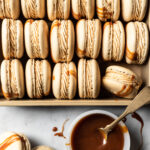
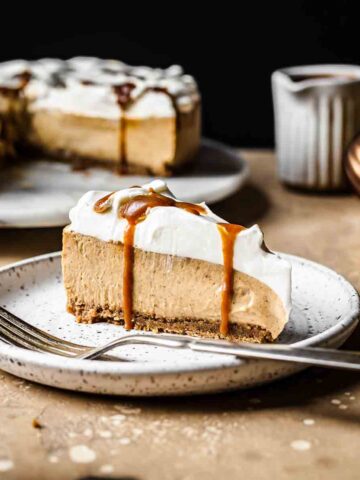
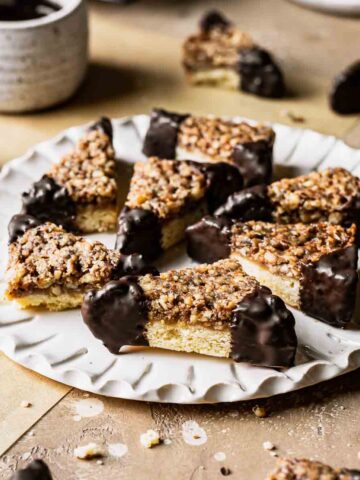

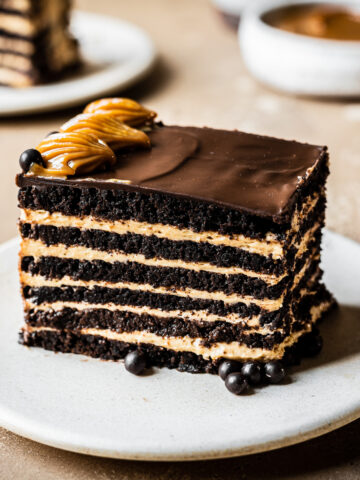
Michel IMBERT says
Bonjour de France,
Je découvre votre chaine et c'est magnifique, félicitations !!!
Votre travail de pâtissière et de blogueuse est impressionnant.
Qualité du texte et de l'image, détails et précisions à destinations des novices, rien ne manque, tout y est, chapeau.
C'est très différent de toutes ces recettes banales et incomplètes que l'on trouve sur Youtube et qui ne recherchent que des visites rapides et se moquent de la transmission.
Je n'ai pas encore réalisé votre recette car je fais mes propres macarons depuis plus de 10 ans. Le prochaine fois que je ferai des macarons au caramel au beurre salé, j'essayerai votre recette.
Je regrette vraiment de ne pas savoir m'exprimer en anglais.
Merci pour la transmission et le partage du savoir.
Bravo, aux jeux olympiques, je vous donnerai la médaille d'or.
MICHEL31
Clay says
Made some macarons for a party and one of the fillings used your caramel sauce and swiss meringue buttercream, I had people shoving other flavors aside to see if there were any more salted caramel left, an absolute hit.
Great flavors!
Chris says
This is it. This is the 3rd and best recipe I’ve tried when making macarons. Previous recipes only called for 100g of egg whites. So I was a little skeptical of using 170g, but this made a great meringue and the macronage came together a lot quicker than previous batches. The brown sugar added a great color to the shells and they set perfectly after 17 minutes in the oven.
The only addition I added was 1/4tsp of cream of tartar.
Kathleen Culver says
Woohoo!
I'm so happy to hear that, Chris.
I love the toasty golden color that the brown sugar adds.
I appreciate the note!
Kathleen
Carley says
Hi! I just made this recipe - my first time making macarons AND Carmel sauce AND buttercream frosting! It was so fun and the macarons and Carmel sauce were delicious and the perfect texture! But I’m having an issue with the buttercream frosting - it really looked good until I needed to add in the Carmel sauce and then it got very wet and sorta seperated. The Carmel sauce was definitely cooled, I had finished making it 3 hours before. I tried googling the issue and it didn’t seem to exactly match the butter too cold or the butter too hot options. Any suggestions?
The buttercream still tasted fantastic and I just made slightly wet little sandwiches and my family loved them! But I’d like to be really impressive the next time around
Kathleen Culver says
Hi Carley,
Wow - I am impressed already!
Thank you for making my recipe.
I'm sorry that you had problems with the buttercream. It's so frustrating when that happens.
I haven't had the buttercream break when I add the caramel, but it's possible, like you say, due to temperature differences.
It's hard to tell from your description whether it was too runny, or separated/curdled.
If the buttercream gets runny when you add your caramel, it's often because the whole mixture has gotten too warm.
Putting the whole bowl in the fridge for about 20 minutes in the fridge should help, and then beating it all for a few minutes again.
If it was more curdled, that's the opposite issue - too cold. It's possible the caramel sauce was cooler than the buttercream.
In that case, it's helpful to scoop out a half cup of frosting and microwave it for 10-15 seconds until warm and runny.
Pour it back into the bowl with the mixer running and that should bring it back together!
Check out some Google images of the two issues to see which one looked more like yours.
Please let me know if you need more troubleshooting advice. I'm happy to help!
So glad you enjoyed them nevertheless.
Kathleen
Kina Mcconico says
I absolutely love your blog.. Excellent colors & theme. Did you develop this website yourself? Please reply back as I’m trying to create my very own blog and want to know where you got this from or exactly what the theme is called. Cheers!
Kathleen Culver says
Hi Kina,
Thank you!
Check out Feast Design. They do excellent work and have great themes with SEO in mind.
Best wishes with your blog.
Kathleen